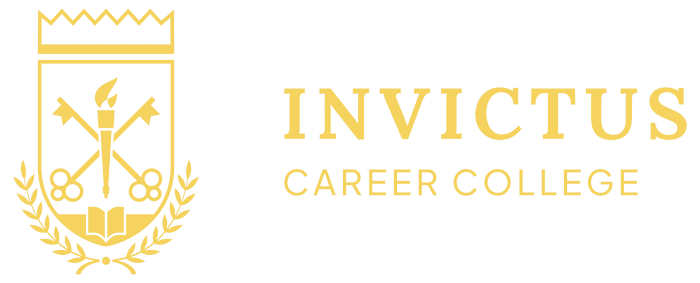OFFICE RESPONSIBLE: FAO
LOCATION: STUDENT CATALOGUE AND WEBSITE
DOCUMENT LAST REVIEWED/UPDATED: JULY 1, 2018
POLICY AND PROCEDURE LAST REVIEWED/UPDATED: JULY 1, 2018
All Consumer Information is located on our website at www.bucknerbarberschool.com or www.bucknerbarberschool.net and in our student catalogue. A notice of availability is distributed to each newly enrolled student in their new student packet and is distributed to all enrolled students annually in mid September.
Financial Assistance
RESOURCES
Education is a big investment. The training you’ll receive at Bucker barber School increases your chance of finding a great career. And it decreases your chance of being unemployed. You will be more likely to find an interesting, rewarding career in a field that offers a lot of opportunity. When you graduate from BBS, you stand a better chance of finding a job and making more money than your peers with less education. Combine that with greater opportunities for job satisfaction, and your BBS training becomes an investment that is hard to beat.
Financial Aid is available in many different forms to those who qualify; the following are some types of financial aid available to students:
FEDERAL PELL GRANTS are monies given to people to help pay for school awarded based on financial need.
DIRECT LOANS are borrowed monies through the U.S Department of Education that must be repaid (with interest)
DIRECT SUBSIDIZED LOANS are awarded to student who show financial need and don’t accrue interest while the student is in school. You have six months grace period after you graduate, withdraw or drop below half-time.
DIRECT UNSUBSIDIZED LOANS are available to all student, regardless of financial need. Interest does accrue on this loan while the student is in school.
DIRECT PLUS LOANS are only available for parents of Dependent Student. Financial need is not a consideration, but a credit check is required.
PRIVATE/ALTERNATIVE LOANS can provide additional funding to assist student with their education. These are generally provided by banks and credit unions and other private lending institution. Information on these loans can be found on the web at a site like www.fastweb.com.
VA BENEFITS
VATERANS BENEFIT avaliable to our veterans who are qualified to receive educational benefit.
SCHOLARSHIPS are provided by some companies, professional associations, and religious groups to individuals or their family members seeking assistance paying for their education. Searching the internet is a great way to see what might be available to you.
STATE GRANTS are available through the Texas Department of Assistive & Rehabilitation Services (DARS) which assists people who have disabilities prepare for, find and keep jobs. To locate an office in your area visit: www.dars.state.tx.us or call 1-800-628-5115.
“All options above are not available for every student. Please contact the office of Financial Aid for further information.
Apply for Financial Aid
Financial Aid is available for those who qualify. In order to apply for Federal Financial Aid you must complete a Free Application for Financial Aid (FAFSA). This can be done by submitting a paper FAFSA by calling and requesting one at 1-800-4-FED-AID or on the web at www.fafsa.ed.gov. Federal Financial Aid awards and amount are based on the information provided by the student on his/her FAFSA and are determined by the Department of Education.
BBS’S School Code for the FAFSA is 041779
Free Money First
Finance your education with free money first, then use other sources of money with the lowest cost to you.Your financial aid office determines your eligibility for each type of federal student aid, based on the Free Application for Federal Student Aid (FAFSA®) .
Apply for Grants and Scholarships
Free Application for Federal Student Aid (FAFSA®) .
You don’t have to repay scholarships, or most grants.
- Explore federal grant programs .
- Search for scholarships.
- See if your school, state, or other organizations offer scholarships or grants.
- Consider scholarships for U.S. military service, educational support offered by the military, and educational benefits for veterans.
Work Part-TimeA job doesn’t provide free money but may be a way to cover costs your scholarships and grants don’t.
- Balance work hours with your studies.
- Explore job opportunities near campus.
Federal Direct Loans
- Federal student loans may be a way to address a shortfall between the funds that you have and the funds that you will need. There is always a cost to borrowing money but federal student loans may offer benefits, such as flexible repayment plans, that aren’t available with other loans.
Direct Subsidized Loans
- If you’re eligible, take advantage of Direct Subsidized Loans. The government pays the interest on a Direct Subsidized Loan that has retained the interest subsidy while you are in school and during certain other periods in most cases.
ENTRANCE COUNSELING POLICY
Title IV Financial Aid regulations require all recipients of Direct Loans to complete Direct Loan Entrance Counseling . Students can obtain a copy of the Department of Education’s Direct Loan Entrance Counseling Guide in the Financial Aid Office or they can complete Entrance Counseling online at https://studentloans.gov/myDirectLoan/counselingInstructions.action in about 30-45 minutes. All BBS students wishing to receive Direct Student Loans will be required to complete Entrance Counseling before their Loan Processing can begin.The Entrance Counseling session is designed to inform you of important information you should know before you borrow a loan. The information listed here is very similar to the information given in the Loan Entrance Counseling, but it can not be used as a substitute for actual Entrance Counseling.
Master Promissory Note
An MPN is a binding legal document that you must sign before receiving your first Direct Loan. The same MPN can be used to make one or more loans for one or more academic years (up to 10 years). Therefore, if you leave school and return, you may be able to receive additional loans without signing a new MPN. An MPN lists the terms and conditions under which you agree to repay the loan and explains your rights and responsibilities as a borrower. It’s important to read your MPN and keep it in a safe place because you’ll need to refer to it later when you begin repaying your loan or at other times when you need information about provisions of the
Loan Disbursements
In most cases, your school will disburse the proceeds of your Direct Loan by crediting it to your school account to pay tuition and fees, room and board, and other authorized charges. If the loan disbursement amount exceeds school charges, the remaining balance of the disbursement will be paid to you directly by check or other means. You will be notified in writing each time your school disburses a portion of your loan. The notification will include—
· the expected date and amount of the loan disbursement, and
· your right to cancel all or a portion of your Direct Loan, and
· the procedures and time frame for notifying the school that you want to cancel all or a portion of your Direct Loan.
EXIT COUNSELING POLICY
Title IV Financial Aid regulations require all recipients of Direct Loans to complete Direct Loan Exit Counseling before graduating or dropping below half time enrollment. Students can obtain a copy of the Department of Education’s Direct Loan Counseling Guide in the Financial Aid Office or they can complete Exit Counseling online at https://studentloans.gov/myDirectLoan/counselingInstructions.action in about 30-45 minutes.
Exit counseling is designed to give the borrower important information on their loan repayment and to ensure that your lender has your current information. The information listed here is very similar to the information given in the Loan Exit Counseling, but it can not be used as a substitute for actual Exit Counseling. Knowledgable staff in the Financial Aid office are available during office hours to answer any questions students may have before or after completing Exit Counseling.
Students that received Direct Loans and are eligible for graduation from BBS or want to officially withdraw from BBS are required to show proof of electronic completion of Loan Exit Counseling online at https://studentloans.gov/myDirectLoan/counselingInstructions.action or they will be required to read and complete the forms found in the Dept. of Ed. Exit Counseling Guide before being allowed to withdraw or graduate. The Exit Counseling Guide is available in the BBS Financial aid Office.
If a student who has received a Direct Loan unofficially withdraws from Invictus Career College without any notification they are still required to complete Direct Loan Exit Counseling. BBS will mail Exit Counseling materials to their last known address within 30 days of the date it is determined they withdrew from BBS or failed to complete the required Exit Counseling .
REPAYMENT
Repayment is the process of satisfying your obligation to pay back the money you borrowed to help you in paying for your education. For subsidized and unsubsidized loans, repayment begins when your grace period ends. You repay your loan according to a repayment plan set up and agreed upon between you (the borrower) and your lender. The repayment plan you choose determines the amount you pay each month and the number of payments you must make. The maximum time period over which you must repay your federal student loan is the repayment period. The repayment period can range from 10 years to 30 years, depending on loan amount, loan type, and repayment plan. Your lender (the U.S. Department of Education) will give you a choice of standard, graduated, or income-sensitive repayment plans not earlier than six months before the date of the first scheduled loan payment. If you don’t choose a plan within 45 days of the lender’s offer, the lender will use the standard repayment plan. Even if you don’t choose a particular plan, you may reach an agreement with your lender to repay all of your loans under one repayment schedule. You can change your repayment plan annually.
Comparing Repayment Plans
There are several key differences between the repayment plans, but the most importantdifferences are your monthly payment and the total amount of interest that you’ll be repaying.
• Standard Repayment Plan – You’ll usually pay your loan within ten years. You’ll be repaying the same amount of the loan each month, though your monthly payment may vary slightly from year to year because of interest-rate changes. • Graduated Repayment Plan – You’ll start with a lower monthly payment. Over time, your monthly payments will increase. While this plan may help you initially (when your starting salary is lower early in your career), keep in mind that you’ll pay more total interest over the life of the loan than you would with the Standard Repayment Plan.
• Income-Sensitive Repayment Plan – Your payments are adjusted annually based on your expected total monthly gross income. If your salary increases regularly, your monthly payments will increase, as they do under the Graduated Repayment Plan; however, if your salary is reduced, your payments will also be reduced.
• Extended Repayment Plan – If you’re a new Stafford borrower (as of October 7, 1998)who has more than $30,000 in Direct Loans, you can choose the Extended Repayment Plan. Because you make payments over a longer period (not to exceed 25 years) your monthly payments will be lower; however, the total amount of interest you repay will be greater.
Grace period
When you leave school, you won’t have to begin repaying your loan right away. Direct Loans allow a six-month “grace period” that starts when you leave school or drop below half-time enrollment. If you have a subsidized Direct Loan, in most cases you won’t be charged interest while you’re in school or during the grace period. However, in some instances recipients of subsidized loans become responsible for paying the interest while still enrolled in school. (Unsubsidized Direct Loans accrue interest from the date of disbursement.)
Deferment Periods
These are periods during which you don’t have to make loan payments. The most common deferments are for students attending college (enrolled at least half-time), who are unemployed, or who have economic hardship. If you have a subsidized Direct Loan, the government pays the interest while the loan is in deferment. If you have an unsubsidized loan, you can either pay the interest as it continues to accrue on the loan, or postpone your interest payments during the deferment. (See the section titled “Capitalization.”) If you believe you may be eligible for one of these deferments, contact Direct Loan Servicer. (See contact information at the end of this document.)
Forbearance Periods
These periods are similar to the deferment periods, but often they are at the lender’s option. Also, you will always have to pay the interest that accumulates, even on a subsidized loan.
Capitalization
If interest is accumulating on your loan during a period when you’re not making loan payments, the lender will usually capitalize the interest, which means the interest is added to the loan principal. For instance, if you choose not to pay the interest on an unsubsidized Direct Loan while you’re in school, in forbearance, in deferment, or in a grace period, the interest will usually be capitalized. Because this added amount also begins accruing interest, capitalizing usually increases the overall amount to be repaid.
Default
Unfortunately, some students don’t repay their student loans, and the loans go into what is referred to as default. Default can have very serious consequences for the borrower. If you default on a loan, you will be reported to national credit bureaus (harming your credit rating and jeopardizing your ability to get a loan for a new car or home, etc.), your wages can be garnished, your income tax refund can be withheld, and you won’t be able to get student aid to go back to school.
Repay Your Loan—Don’t Default!
Defaulting on your loan is a serious matter and can have severe consequences for your future credit standing. Follow these simple steps to prevent defaulting on your loans:
• Keep all your loan paperwork. Keep your promissory note, repayment schedule, cancelled checks, just the same as if you were borrowing to buy a car or a house. If you sign your promissory note electronically, print a copy of the confirmation.
• Stay in touch with your lender. Be sure your lender always has your current address and phone number on file. When you complete the online Direct Loan Exit Counseling session, you not only obtain important information about repayment of your loan(s), you also ensure that your lender has your current information.
• Contact your lender if you’re having trouble making payments. If you find yourself in a financial bind and are having difficulty making your loan payments, the lender may be able to offer forbearance on the loan or make other arrangements to keep you from defaulting. Always, always contact your Direct Loan Servicer if you find it difficult or impossible to make your monthly payments:
Direct Loan Servicer
1-800-848-0979
www.dlservicer.ed.gov
DEPARTMENT OF ED NOTIFICATION
Buckner Barber school will forward the borrower’s current information concerning name, address, social security number, references, and driver’s license number and
Institutional Information
a) Student Diversity
link/web address- http://nces.ed.gov/collegenavigator/?q=buckner+barber+school&s=all&id=461740#enrolmt
FALL 2017
TOTAL ENROLLMENT (ALL UNDERGRADUATE): 23
Undergraduate transfer-in enrollment: 0
Student Gender: Male 83%, Female 17%
Student Race/Ethnicity:
BLACK/AFRICAN AMERICAN…….52%
HISPANIC/LATINO……………………35%
WHITE……………………………………..13%
UNDERGRADUATE STUDENT AGE:
UNDERGRADUATE STUDENT RESIDENCE:
Undergraduate Student Residence:In-state: 100%Out-of-state: 0%Foreign countries: 0% Unknown: 0%
§ Residence data are reported for first-time degree/certificate-seeking undergraduates, Fall 2016.
UNDERGRADUATE DISTANCE EDUCATION STATUS: N/A
PELL Grant Recipients
link/web address: http://nces.ed.gov/collegenavigator/q=buckner+barber+school&s=all&id=461740#finaid
UNDERGRADUATE STUDENT FINANCIAL AID, 2016-2017
Full-time First-Time Beginning Undergraduate Students
§ Beginning students are those who are entering postsecondary education for the first time.
| TYPE OF AID | NUMBER RECEIVING AID | PERCENT RECEIVING AID | TOTAL AMOUNT OF AID RECEIVED | AVERAGE AMOUNT OF AID RECEIVED |
|---|---|---|---|---|
| Any student financial aid1 | 16 | 100% | $142,801 | $8,925 |
| Grant or scholarship aid | 16 | 100% | $77,110 | $5,744 |
| Federal grants | 14 | 87% | $72,710 | $5,536 |
| Pell grants | 14 | 87% | $72,710 | $5,536 |
| Other federal grants | 0 | 0% | $0 | — |
| State/local government grant or scholarships | 0 | 0% | (*) | (*) |
| Institutional grants or scholarships | 2 | 12% | $4,400 | $2,200 |
| Student loan aid | 9 | 56% | $65,691 | $7,299 |
| Federal student loans | 9 | 56% | $65,691 | $7,299 |
| Other student loans | 0 | 0% | $0 | $0 |
§ 1 Includes students receiving Federal work study aid and aid from other sources not listed above.
§ (*) Number receiving aid and total and average amounts of aid received are withheld to preserve the privacy of individuals.
All Undergraduate Students- 43
| TYPE OF AID | NUMBER RECEIVING AID | PERCENT RECEIVING AID | TOTAL AMOUNT OF AID RECEIVED | AVERAGE AMOUNT OF AID RECEIVED |
|---|---|---|---|---|
| Grant or scholarship aid1 | 35 | 81% | $182,165 | $5,204 |
| Pell grants | 31 | 72% | $171,565 | $5,534 |
| Federal student loans | 22 | 51% | $189,191 | $8,599 |
§ 1 Grant or scholarship aid includes aid received, from the federal government, state or local government, the institution, and other sources known by the institution.
Invictus Career College offers the following books for the Class A Barber course.
Milady’s Standard Professional Barbering Textbook Hardcover, Retail Price: $172.75
ISBN-13: 978-1-4354-9715-3
ISBN-10: 1-4354-9715-5
Milady’s Standard Professional Barbering Exam Review, Retail Price: $52.25
ISBN-13: 978-1-4354-9712-2
ISBN-10: 1-4354-9712-0
The Textbook and Exam Review book are both available for purchase online at amazon.com or barnesandnoble.com
Voter Registration
Invictus Career College will hand out voter registration forms to all enrolling students and will do a presentation every Constitution day discussing the importance of voter registration and voting. We will also hand out voter registration forms during the presentation as we do during our annual Constitution Day presentation.
Constitution Day: Federal Constitution day is September 17th of each year . Invictus Career College observes Constitution Day that week with a presentation on the U.S. Constitution.
RESOURCES
Education is a big investment. The training you’ll receive at Bucker barber School increases your chance of finding a great career. And it decreases your chance of being unemployed. You will be more likely to find an interesting, rewarding career in a field that offers a lot of opportunity. When you graduate from BBS, you stand a better chance of finding a job and making more money than your peers with less education. Combine that with greater opportunities for job satisfaction, and your BBS training becomes an investment that is hard to beat.
Financial Aid is available to those who qualify;
FEDERAL PELL GRANTS are monies given to people to help pay for school awarded based on financial need.
DIRECT LOANS are borrowed monies through the U.S Department of Education that must be repaid (with interest)
DIRECT SUBSIDIZED LOANS are awarded to student who show financial need and don’t accrue interest while the student is in school. You have six months grace period after you graduate, withdraw or drop below half-time.
DIRECT UNSUBSIDIZED LOANS are available to all student, regardless of financial need. Interest does accrue on this loan while the student is in school.
DIRECT PLUS LOANS are only available for parents of Dependent Student. Financial need is not a consideration, but a credit check is required.
PRIVATE/ALTERNATIVE LOANS can provide additional funding to assist
SCHOLARSHIPS are provided by some companies, professional associations, and religious groups to individuals or their family members seeking assistance paying for their education. Searching the internet is a great way to see what might be available to you.
STATE GRANTS are available through the Texas Department of Assistive & Rehabilitation Services (DARS) which assists people who have disabilities prepare for, find and keep jobs. To locate an office in your area visit: www.dars.state.tx.us or call 1-800-628-5115.
“All options above are not available for every student. Please contact the
Apply for Financial Aid
Financial Aid is available for those who qualify. In order to apply for Federal Financial Aid you must complete a Free Application for Financial Aid (FAFSA). This can be done by submitting a paper FAFSA by calling and requesting one at 1-800-4-FED-AID or on the web at www.fafsa.ed.gov. Federal Financial Aid awards and amount are based on the information provided by the student on his/her FAFSA and are determined by the Department of Education.
BBS’S School Code for the FAFSA is 041779
Satisfactory Academic Progress (SAP) Policy
All students enrolled in Invictus Career College must maintain Satisfactory Academic Progress according to the requirements set forth in this policy. Federal regulations require all schools participating in Federal Financial Aid Programs monitor SAP periodically. In order to be
1st Academic Year (900 hours/30 weeks)
- 1st Payment Period – 15 weeks and 450 hours
- 2nd Payment Period – 30 weeks and 900 hours
2nd Academic Year
- 3rd Payment Period – 10 weeks(40 total weeks of attendance) and 1200 hours
- 4th Payment Period – 20 weeks (50 total weeks of attendance) and 1500 hours
Based on a 67% rate of attendance, the maximum time allowed for students to complete each course at satisfactory progress is 1.5 times the course length. All hours, including transfer hours are considered toward completing within 150% of the course length.
Determination of Progress Status
Students meeting the minimum requirements for attendance, required weeks and academics are considered to be making satisfactory progress until the next scheduled evaluation. In order for a student to be considered making satisfactory progress as of course midpoint, the student must meet attendance, number of specified weeks and academic requirements on at least one evaluation by the midpoint of the course, or the midpoint of the academic year, whichever comes first. Students must maintain satisfactory progress to receive federal financial aid.
APPEAL PROCESS
Financial aid ineligibility can be appealed if you have suffered undue hardship. In order for an appeal to be considered, your circumstances must meet at least one of the criteria below. Please indicate below which situation(s) best applies to the hardship you experienced. In addition, ALL appeals must be submitted with supporting documentation. The documentation must be attached to the appeal at the time the appeal is submitted. Examples of acceptable documentation are listed below. The documentation should be attached to the appeal at the time the appeal is submitted.
| Circumstance(s) that Apply | Required Documentation(must include dates) |
| Severe illness, medical condition or injury | Signed and dated letter from physician with office letterhead or copy of accident report |
| Death of a family member | Death certificate or dated obituary |
| Life altering event (fire, tornado,…etc.) | Insurance claim or FEMA application |
| Military assignment or reassignment | Statement of service signed by commanding officer or military orders |
| Other circumstances beyond the control of the student (must explain in detail the nature and dates of the uncontrollable circumstances) | Appropriate documentation which will verify the situation |



